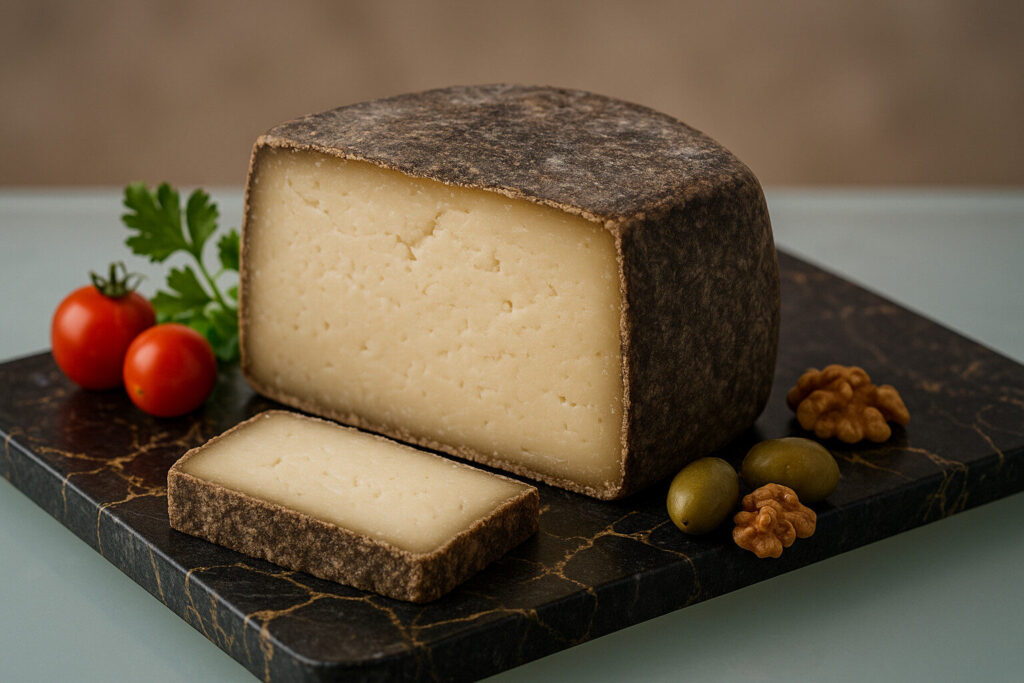Wild Thyme Cheese
Definition and Scope
Wild Thyme Cheese is a semi-hard to hard cheese distinguished by the infusion of wild thyme during production. This herbaceous cheese belongs to the broader category of flavored or botanical cheeses, where natural ingredients are incorporated into the curd. Its identity is defined by the aromatic qualities of wild thyme, which grows in specific Mediterranean regions.
The scope of Wild Thyme Cheese includes variations made from sheep’s, goat’s, or cow’s milk, each contributing different base flavors. It is typically aged for several weeks to months, developing a firmer texture and more complex taste profile. This cheese is a specialty product, often artisanal, reflecting traditional methods of herb integration.
Production Process
Production begins with standard cheesemaking steps: milk is pasteurized, cultured, and coagulated with rennet. After cutting the curd and draining whey, finely chopped or dried wild thyme is thoroughly mixed into the curds before molding. The cheese is then pressed to expel additional moisture and achieve the desired density.
Following pressing, the cheese undergoes a brining or dry-salting stage to enhance preservation and flavor. Aging occurs in controlled environments for a minimum of four weeks, allowing the thyme’s essential oils to permeate the paste. The rind may develop naturally or be treated to prevent unwanted mold during this maturation period.
Sensory Profile
Wild Thyme Cheese presents a pale ivory to light yellow interior with visible green thyme specks throughout. Its texture ranges from semi-firm and sliceable to hard and crumbly, depending on aging duration. The aroma is distinctly herbal, dominated by thyme with underlying milky or lactic notes.
Flavor characteristics include a pronounced thyme essence complemented by savory, slightly peppery undertones. The cheese base contributes nutty, tangy, or buttery notes that balance the herb’s intensity. A salty finish and subtle earthiness are common, with longer aging introducing crystalline crunch and sharper flavors.
Culinary Uses
This cheese functions excellently as a table cheese, served alongside crusty bread, olives, and charcuterie. Its robust flavor stands up well in cooked applications, particularly when grated over roasted vegetables or melted into sauces. Pairing with fruits like figs or apples highlights its herbal qualities through contrast.
Wild Thyme Cheese enhances Mediterranean dishes such as Greek salads, pasta, and meat stuffings. It pairs well with dry white wines like Sauvignon Blanc or light reds such as Pinot Noir. Creative uses include incorporating it into herb-infused cheesecakes or savory tarts for gourmet presentations.
Regional Examples
Greece produces several notable Wild Thyme Cheeses, particularly from Crete and other Aegean islands. These versions often use sheep’s or goat’s milk and incorporate thyme foraged from mountainous areas. They typically feature a firm texture and intense herbal aroma characteristic of the Mediterranean terroir.
Cyprus offers halloumi-style variations with wild thyme, though these are usually consumed fresh rather than aged. French fromagers occasionally produce tomme-style cheeses with wild thyme from Provence’s hillsides. Artisanal American creameries have also developed interpretations using locally foraged thyme and various milk types.

